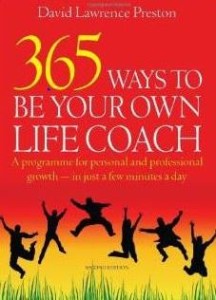Many people have an intense fear of public speaking. Shame. The ability to say a few well-chosen words to a social or business gathering is a skill that can enrich all areas of your life and it’s something anyone can learn.
Public speaking is one of the best ways of building your confidence. Why not join a speakers’ club or take a course in public speaking? It will do wonders for you.
The three keys to becoming a good public speaker are:
- The belief that you can.
- Applying a few basic rules which really make a difference.
- The 3 ‘P’s’ – Practice, Practise, Practice.
The majority of problems relating to public speaking are caused by lack of confidence and low self-esteem.
Most people feel nervous the first time they make a speech. Even the ‘Iron Lady’ herself, Margaret Thatcher, confessed that she felt nervous every time she had to speak.
Be Clear on your Purpose
Be clear on what you want to achieve and what the audience expects. Is it to:
- Inform
- Persuade
- Instruct
- Entertain
- Sell a product or idea
- Motivate
etc.
Preparation
Plan your talk. Even the most spontaneous sounding speakers have probably given a great deal of thought to what they’re going to say.
- Know your subject well.
- Research your audience. How many people? Age, gender, educational profile, likely level of knowledge of your subject? etc.
- Research the venue. Layout? Facilities? Electronic and visual aids?
- How long is your talk? Is there time for questions?
There’s an old adage: ‘Tell ‘em what you’re going to tell ‘em, tell ‘em it, then tell ‘em what you told them’. In other words, have a beginning, a middle and an end. Allocate time to them roughly in the proportion 1:4:1. You may find the middle section is the best place to start your planning.
The introduction
A good opening captures the interest of your audience and establishes your credentials. Make them curious, interested, wanting to know more. Start with an impactful comment, an unusual anecdote, a memorable quotation or amusing story (but don’t tell jokes unless you’re sure you can carry it off).
Introduce yourself. State your aim. Outline the structure of your talk. And don’t ever make excuses or apologise for yourself.
The main body
Don’t try to cram in too much. Seven main points is quite enough for most speeches.
State your message clearly, use illustrations, and involve the audience as much as you can by relating to their own experience.
Avoid pomposity. Sesquipedalian pedantry may obfuscate the audience and the noumenona of your interlocution will be abrogated. And avoid sarcasm too.
Comparisons, examples, contrasts and metaphors all help to bring your speech to life.
Use repetition. Great orators emphasise key points by finding three ways of saying the same thing. The Iron Lady, coached by teams of image consultants, used this to great effect. For example, she often justified her policies as being:
‘Good for families; good for businesses and good for Britain.’
Provide interim summaries from time to time.
The ending
Your conclusion must provide a powerful statement which draws something definite from your talk, such as a summary, the implications, recommendations and perhaps an appeal for action.
Don’t finish with ‘thank you’ or ‘that’s all I have to say’. They’re weak.
Visual aids
Visual aids can be helpful as long as they are not overused. They add interest, help focus attention and act as an ‘aide memoire’ for the speaker.
Use picture and diagrams where possible. Give the audience time to assimilate them. People can’t listen to you and read at the same time.
If you wish, you may prepare a hand-out, but keep the information clear and simple.
Delivery
Adopt a friendly, confident posture. If you’re using notes, try not to make them too obvious. Make eye contact with as many individuals as possible, this makes everyone feel you’re talking to them directly.
Vary the tone, pitch and pace of your voice well to avoid monotony.
Timing
Most people speak at between 100 and 150 words per minute. Novices usually prepare too much, afraid that they’ll run out of material.
Handling questions
Tell them at the start whether you are willing to take questions during the talk or prefer to wait to the end.
A useful mnemonic is T-R-A-C-T:
- Thank and acknowledge the question
- Repeat it
- Answer it
- Check that the answer is accepted
- Thank and confirm their acceptance
Recording your talk
If you’re a newcomer to public speaking, it helps to record yourself in action. Then you can assess your performance and spot any annoying mannerisms. Be especially aware of what your hands are doing – they give away nervousness – and any verbal ‘tics’. I once counted 53 ‘actually’ in a fifteen minute presentation; the fact that I was counting them shows how annoying they were.
Public speaking is not life threatening
Fear of public speaking is perfectly normal. Even the most experiences presenters sometimes get nervous. But I’ve got news for you: the only difference between you and a seasoned professional is that they’ve learned to control their nerves.
If you feel nervous, take your attention to your breathing. Slow and deepen it. Imagine you are breathing from a place deep inside your lower belly and the nervousness is melting away.
And finally….
As a teenager, I was so nervous I used to bunk off on the afternoon of the school debates just in case I was called upon to speak. I taught myself by throwing myself in at the deep end, including standing for Parliament, teaching 300 Russians a subject I knew little about through an interpreter in Moscow and becoming a lecturer to a rowdy group of upstart business students in my early thirties. If I can do it, so can you!
©David Lawrence Preston, 7.6.2016
Follow me on Facebook and Twitter @David_L_Preston
How To Books, 2004

Leave a Reply